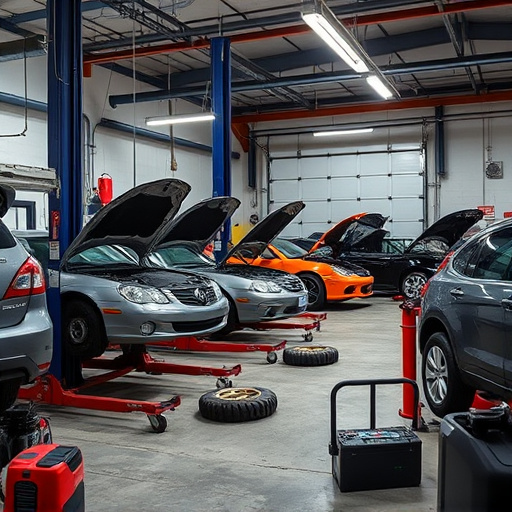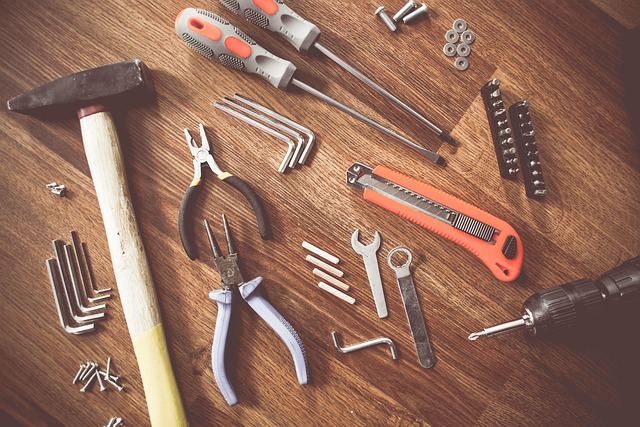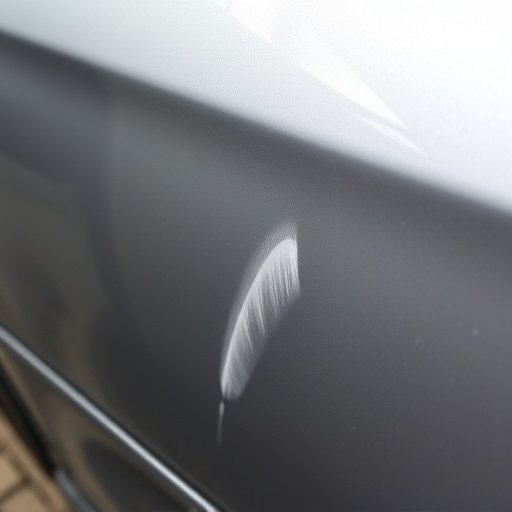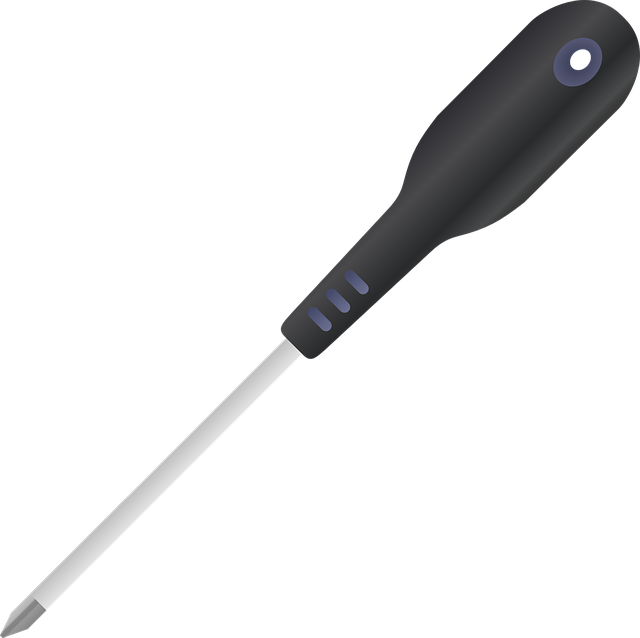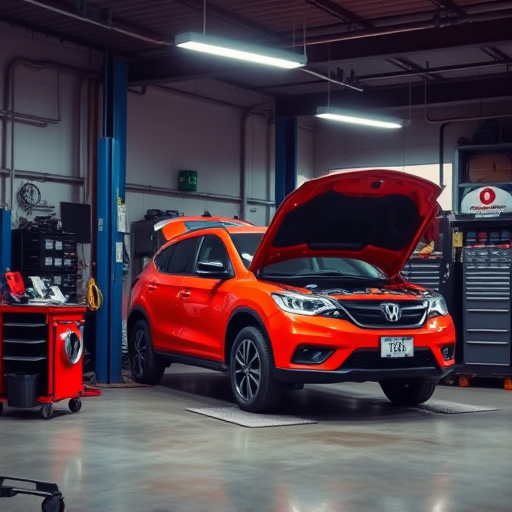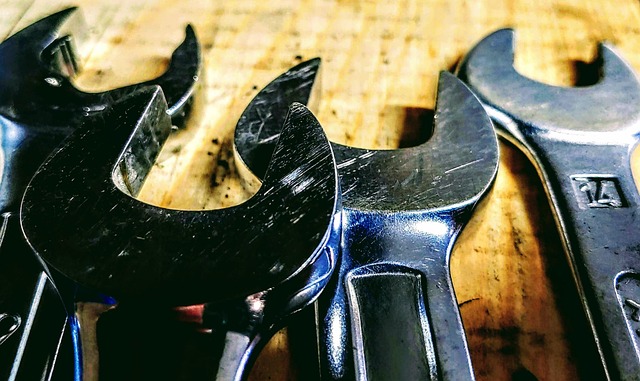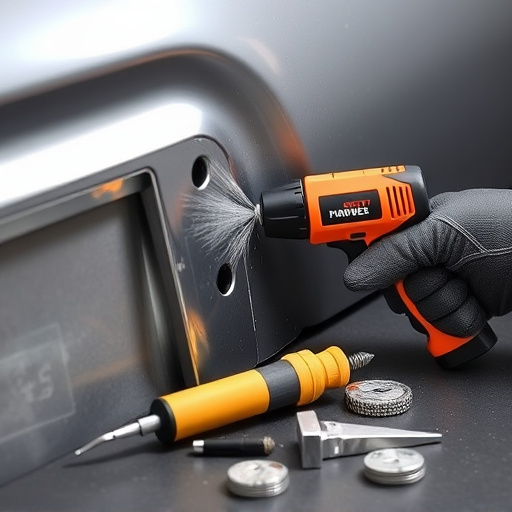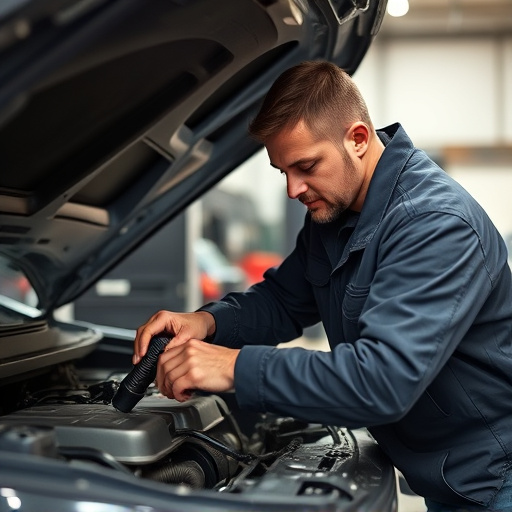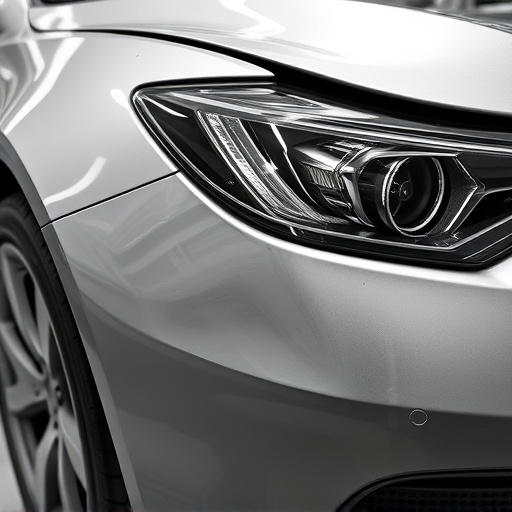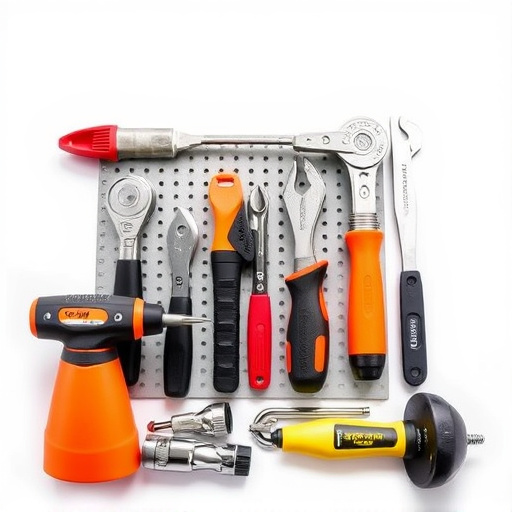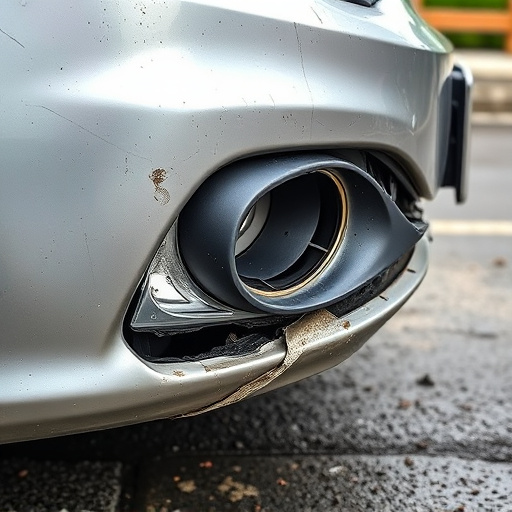The primer surfacer application is crucial for modern vehicles' paint performance and longevity, acting as a bonding agent to fill imperfections and ensure adhesion. Challenges include intricate designs, diverse materials, complex shapes, and environmental factors. Advanced technologies like robotic sandblasting, computer-aided measuring, electrostatic charging, and vacuum holding are adopted to overcome these hurdles, ensuring even coating and enhancing durability for flawless finishes.
In modern vehicle design, the primer surfacer application process plays a pivotal role in achieving high-quality car painting. However, challenges like surface imperfections, material compatibility issues, and environmental factors can lead to suboptimal results. This article delves into the crucial role of primer surfacers, explores common application hurdles with causes and effects, and presents advanced techniques to overcome these preparation barriers. Understanding and mastering these aspects are essential for achieving durable and aesthetically pleasing finishes in contemporary automotive painting.
- Understanding Primer Surfacer's Role in Modern Car Painting
- Common Challenges in Application: Causes and Effects
- Advanced Techniques to Overcome Surface Preparation Hurdles
Understanding Primer Surfacer's Role in Modern Car Painting
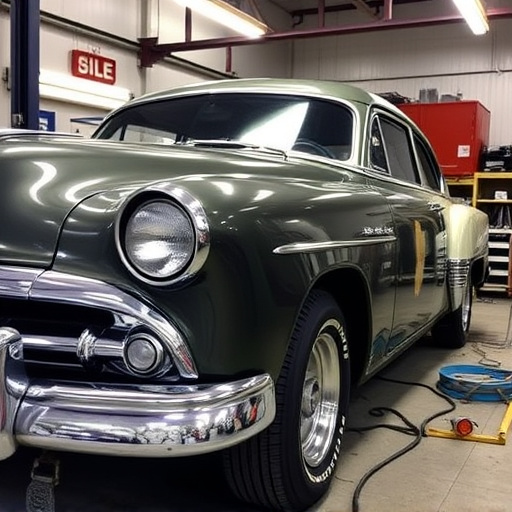
In modern vehicle designs, understanding the role of a primer surfacer application is paramount for achieving optimal paint performance and longevity. Primer surfacers act as a crucial bonding agent between the auto body repairs or replacements and the final coat of paint. They prepare the surface by filling in imperfections, providing an even base that ensures excellent adhesion. This step is especially vital in modern cars with complex paintschemes and diverse materials, where the primer surfacer must bridge any gaps left by auto body repairs or the original auto glass repair, ensuring a seamless finish.
Furthermore, the primer surfacer application plays a significant role in auto maintenance routines. A well-applied primer surfacer not only enhances the aesthetics of the vehicle but also protects the painted surface from environmental damage. By acting as a barrier against moisture, chemicals, and UV rays, it extends the lifespan of the paint job, reducing the need for frequent repainting or costly auto body repairs. This is particularly important given the ever-evolving technologies in automotive design, where lightweight materials and innovative finishes require precise primer surfacer application to maintain their integrity.
Common Challenges in Application: Causes and Effects
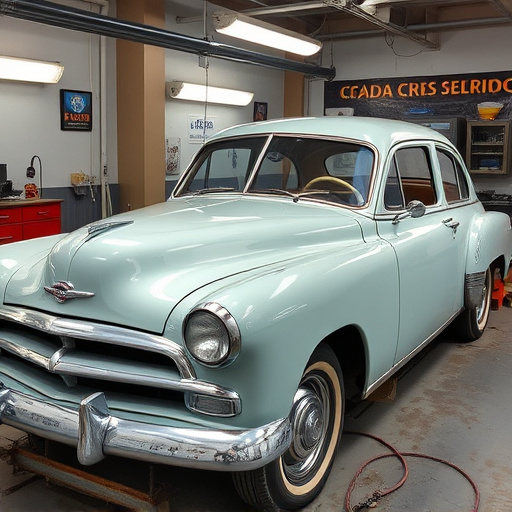
The process of applying primer surfacer, a crucial step in auto body repairs, presents several challenges for modern vehicle designs. Common issues include surface preparation, material compatibility, and achieving even coats, especially with complex shapes and curved surfaces common in contemporary cars. Improper application can lead to visible defects like streaks, bumps, or uneven finishes, impacting the overall quality of hail damage repair or automotive body shop work.
Causes of these challenges range from intricate vehicle designs requiring precise masking to the diverse array of primer surfacer types and paint systems used, each with specific application methods. In an auto repair shop setting, ensuring optimal conditions, including temperature, humidity, and ventilation, is essential for successful priming. Failure to address these factors can result in poor adhesion, blistering, or other cosmetic issues that require additional work to rectify, prolonging the repair process.
Advanced Techniques to Overcome Surface Preparation Hurdles
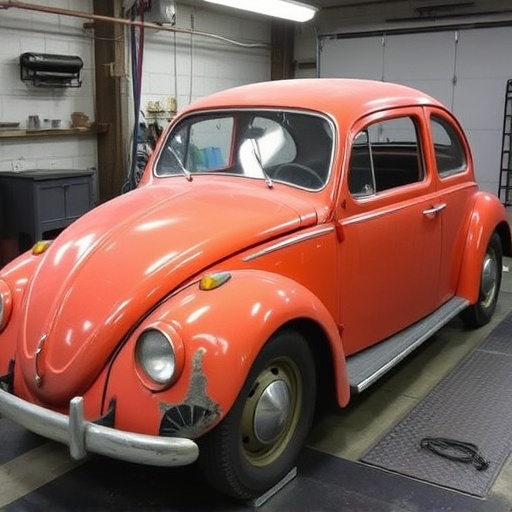
In modern vehicle designs, achieving a seamless primer surfacer application requires advanced techniques to overcome surface preparation hurdles. With complex geometries and increasingly lightweight materials, traditional methods often fall short. Auto collision centers are leveraging cutting-edge technologies like robotic sandblasting and computer-aided measuring systems to ensure precise and consistent surface readiness. These innovations minimize imperfections, allowing for a more even coating that enhances the durability of subsequent layers, including vehicle paint repair.
Additionally, the integration of automated surface treatments, such as electrostatic charging and vacuum holding, streamlines the process while reducing human error. By combining these advanced techniques, car damage repair facilities can meet the stringent requirements of contemporary vehicle designs, ensuring that every primer surfacer application contributes to a flawless final finish.
In modern vehicle design, efficient primer surfacer application is paramount for achieving high-quality car painting. By understanding the critical role of primer in surface preparation and addressing common challenges, such as material consistency and surface defects, automotive professionals can significantly enhance overall paint performance and durability. Adopting advanced techniques ensures a smooth, even base, setting the stage for superior final finishes that meet modern aesthetic and protective standards.
